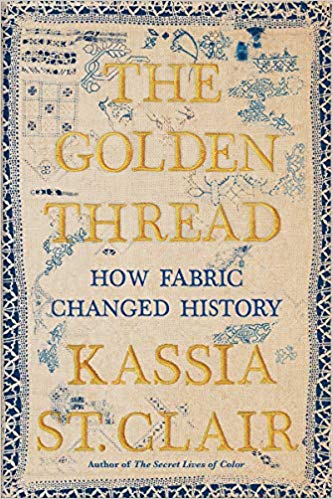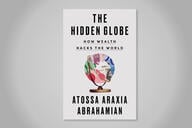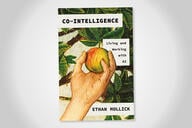You have /5 articles left.
Sign up for a free account or log in.
 The Golden Thread: How Fabric Changed History by Kassia St. Clair
The Golden Thread: How Fabric Changed History by Kassia St. Clair
Published in November 2019
In the preface to The Golden Thread, Kassia St. Clair tells us that this "is a book written for the curious." In the pages that follow, the author delivers on her promise.
Why else would one spend 11 hours and 26 minutes (the length of the audiobook) on a book about the role of fabric in history and culture save for curiosity?
Today, it is easy not to think about the fabric in our lives. I'm proof of this possibility. Thoughts of clothing occupy little of my brain space.
I've often thought that Andrew Ng, Coursera's co-founder, has the right idea about how to dress. I'm not sure if Ng still follows this practice, but in my mind, I see him wearing the same (very nice) button-down blue shirt that he wore in countless course videos.
The rise of cheap, mass-produced clothing, stitched in low-wage countries such as Bangladesh, has mostly removed fabric from our consciousness. This is unfortunate.
As St. Clair details in a chapter on the 2013 Rana Plaza tragedy in Bangladesh that took the lives of 1,135 garment factory workers, many pay a high price for our cheap clothing.
The other cost to our modern fabric blindness is to forget that, for most of history, cloth was at the center of economic and social relations.
Ask an undergraduate history major (as I was three decades ago) about the technologies that powered the Industrial Revolution, and they are likely to mention steam engines and other coal-powered machines.
A better answer might include thread, cloth and fabric. Any story about the history of the U.S., from that of enslaved peoples to technological change, puts fabric (and especially cotton) at the center of the narrative.
The Golden Thread tells the story of the centrality of cloth in the pre-industrial and early capitalist economy, and then spins this tale forward to the present day.
There are enjoyable chapters on the centrality of natural and artificial fabrics on attempts (often failed) to summit Everest, as well as tech suits in Olympic swimming and spacesuits for spacewalks and moon landings.
If I ever become a university president, among my first acts will be to create a department of microhistory.
The chair of the department of microhistory will be Mark Kurlansky (cod, salt, oysters, milk and paper).
I will staff that department with classically and unconventionally trained historians who write books (and teach classes) on subjects such as sugar (James Walvin), cutlery (Bee Wilson), sand (Vince Beiser), potatoes (John Reader), uranium (Tom Zoellner), chess (David Shenk), coal (Barbara Freese), the Yugo (Jason Vuic), the hamburger (Joel Ozersky), the bagel (Maria Balinska), the banana (Dan Koepel), rats (Robert Sullivan), tobacco (Iain Gately), cotton (Stephen Yafa), zippers (Robert Friedel), the screwdriver and the screw (Witold Rybczynski), pigeons (Andrew Blechman), the pencil and the toothpick (Henry Petroski), chocolate (Mort Rosenblum), corn (Betty Fussell), glass (William S. Ellis), and vanilla (Patricia Rain).
Who are some other faculty we should recruit for our new department of microhistory?
What are you reading?




